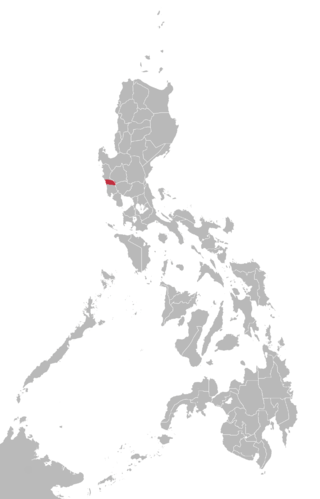| Botolan | |
|---|---|
| Botolan Sambal | |
| Native to | Philippines |
| Region | some parts of Zambales province, Luzon |
Native speakers | 33,000 (2000)[1] |
| Official status | |
| Regulated by | Komisyon sa Wikang Filipino |
| Language codes | |
| ISO 639-3 | sbl |
| Glottolog | boto1242 |
 Area where Botolan Sambal is spoken according to Ethnologue | |
Botolan is a Sambalic language spoken by 32,867 (SIL 2000) Sambal, primarily in the Zambal municipalities of Botolan and Cabangan in the Philippines. Language status is 5 (developing). [2]
Varieties
The Ayta people of sitio Villar, Botolan, and sitio Kakilingan, Santa Fe, Cabangan also speak a Botolan dialect with some unique lexical items.[3]
Ethnologue reports Ayta Hambali (Hambali Botolan), Sambali Botolan as dialects of Sambal Botolan. Among themselves, Ayta Hambali reportedly use some words that are similar to Ayta, Mag-Anchi. [2]
Phonology
Botolan has 20 phonemes: 16 consonants and four vowels. Syllable structure is relatively simple. Each syllable contains at least a consonant and a vowel.[citation needed]
Vowels
Botolan has four vowels. They are:
- /a/ an open front unrounded vowel similar to English father
- /e/ a close-mid front unrounded vowel similar to German Elefant
- /i/ a close front unrounded vowel similar to English machine
- /u/ (written as ‘o’) a close back unrounded vowel similar to English flute
There are five main diphthongs: /aɪ/, /uɪ/, /aʊ/, /ij/, and /iʊ/.
Consonants
Below is a chart of Botolan consonants. All the stops are unaspirated. The velar nasal occurs in all positions including at the beginning of a word.
| Bilabial | Dental | Palatal | Velar | Glottal | ||
|---|---|---|---|---|---|---|
| Nasals | m | n | ɲ ⟨ny⟩ | ŋ ⟨ng⟩ | ||
| Plosives/ Affricates |
voiceless | p | t | tʃ ⟨ts, ty⟩ | k | ʔ - |
| voiced | b | d | dʒ ⟨dy⟩ | g | ||
| Fricatives | s | ʃ ⟨sy⟩ | h | |||
| Laterals | l | lj ⟨ly⟩ | ||||
| Flaps | r | |||||
| Semivowels | w | j | ||||
Note: Consonants /d/ and /ɾ/ can sometimes interchange as they were once allophones.
Stress
Stress is phonemic in Botolan. Word stress is very important; it differentiates homonyms, e.g. hikó ('I') and híko ('elbow').
Historical sound changes
Many words pronounced with /s/ and /ɡ/ in Tagalog have /h/ and /j/, respectively, in their cognates in Botolan. Compare hiko and bayo with the Tagalog siko and bago.
Sample texts
The Lord's Prayer
Version from Matthew
Tatay nawen ya anti ha katatag-ayan,
Hay ngalan mo ay igalang dayi nin kaganawan.
Andawaten nawen ya tampol kayna dayin mag-arí.
Mangyari dayi ya kalabayan mo bayri ha babon lotá
Bilang ombayro ha katatag-ayan.
Hapa-eg ay biyan mo kayin pamamangan ya
angka-ilanganen nawen.
Patawaren mo kayi ha kawkasalanan
nawen bilang pamatawad nawen ha nakapagkasalanan konnawen.
Agmo kayi biyan ma-irap ya pagsobok boy
ipakarayó mo kayi koni Satanas.[4]
Philippine national proverb
Below is a translation in Botolan of the Philippine national proverb[5] "He who does not acknowledge his beginnings will not reach his destination," followed by the original in Tagalog.
- Botolan: Hay ahe tanda nin nanlek ha pinangibatan, ay ahe makalateng ha lalakwen.
- Tagalog: Ang hindi marunong lumingon sa pinanggalingan ay hindi makararating sa paroroonan.
See also
References
- ^ Botolan at Ethnologue (18th ed., 2015) (subscription required)
- ^ a b "Ethnologue".(subscription required)
- ^ Himes, Ronald S. (2012). "The Central Luzon Group of Languages". Oceanic Linguistics. 51 (2): 490–537. doi:10.1353/ol.2012.0013. JSTOR 23321866.
- ^ "Botolan Sambal". Archived from the original on 2007-09-29. Retrieved 2007-09-22.
- ^ "National Philippine Proverb in Various Philippine Languages". Carl Rubino's homepage.
- Antworth, Evan L. (1979). Grammatical Sketch of Botolan Sambal. Manila: Linguistic Society of the Philippines.
External links
- Grammar sketch of Botolan found on Carl Rubino's homepage
- Sample recordings from the GRN Network, in Botolan
- Hay Halita nin Diyos, Bible verses in Botolan
